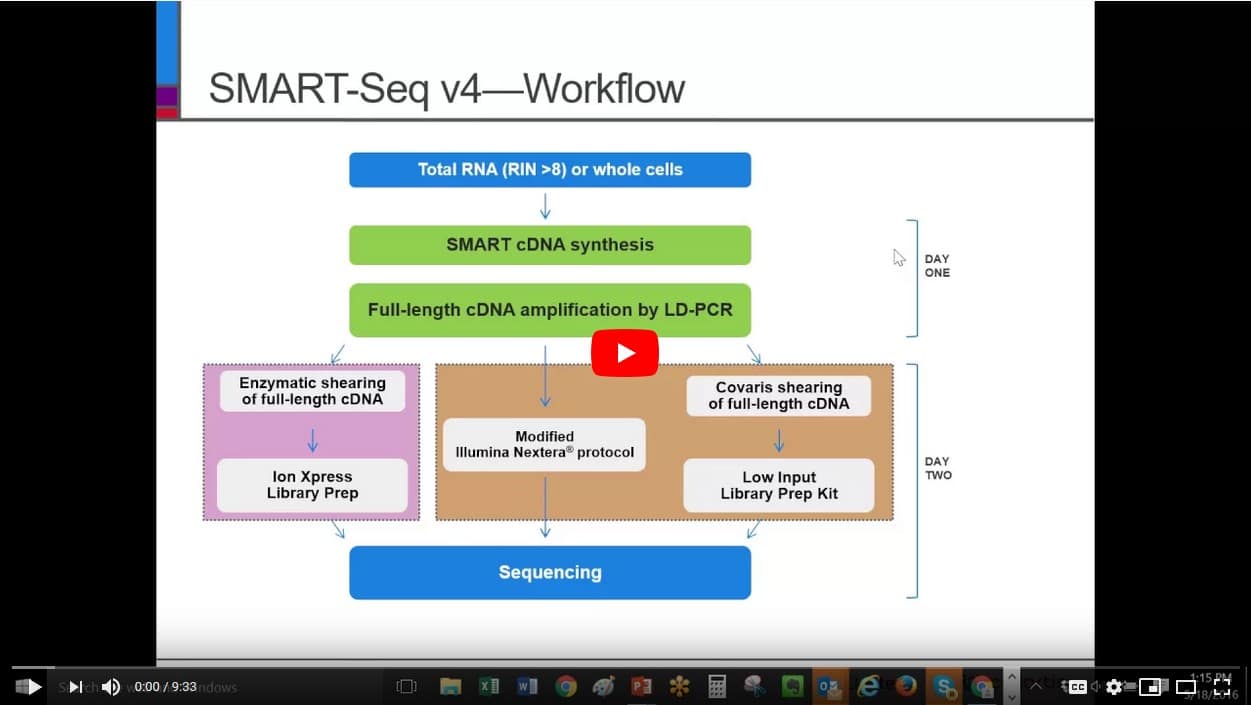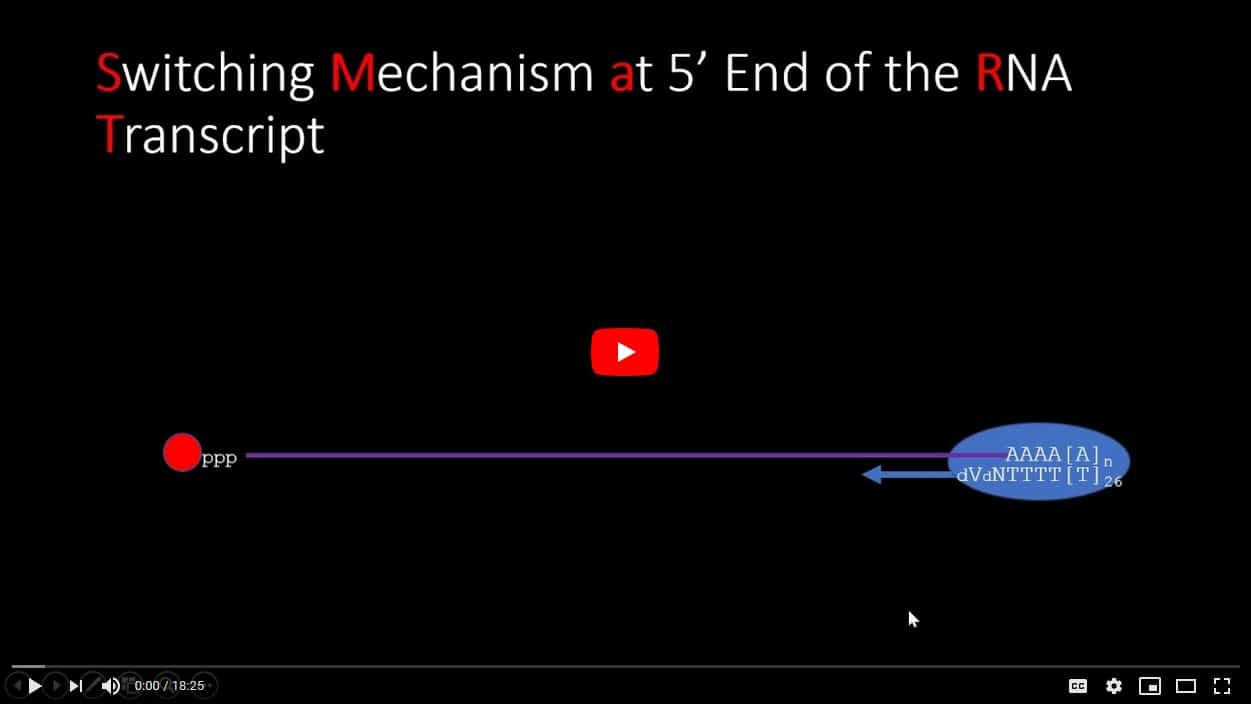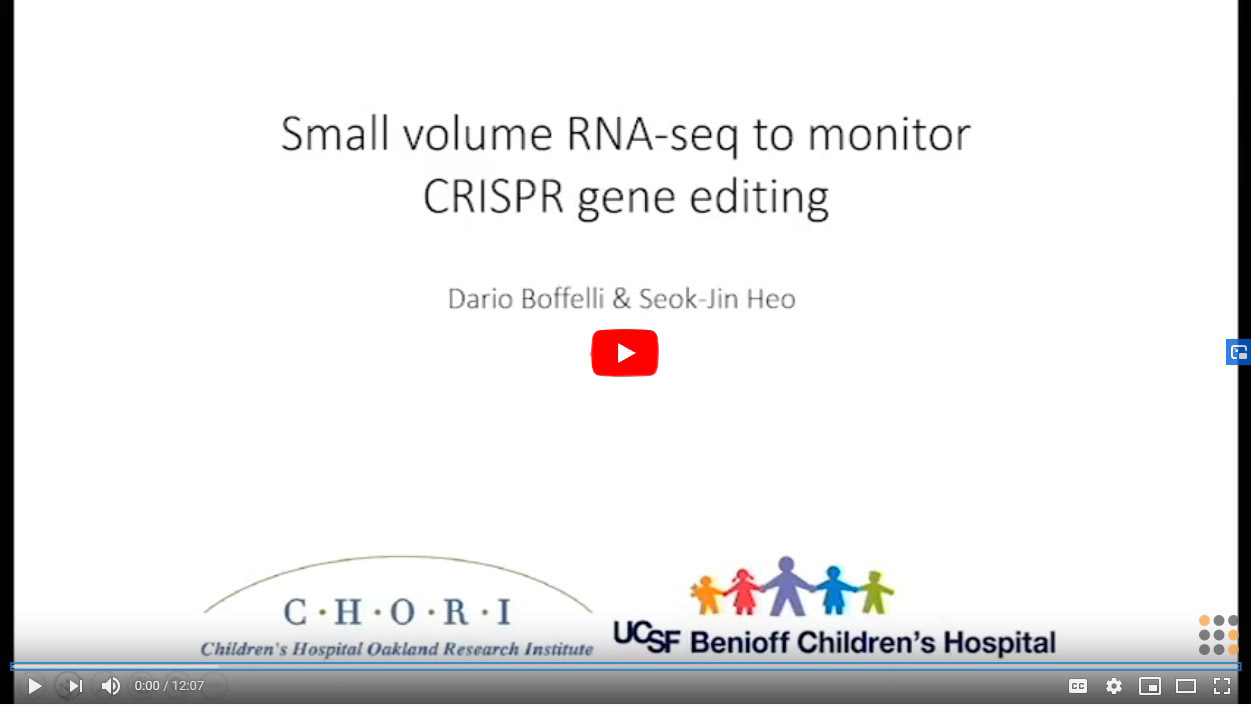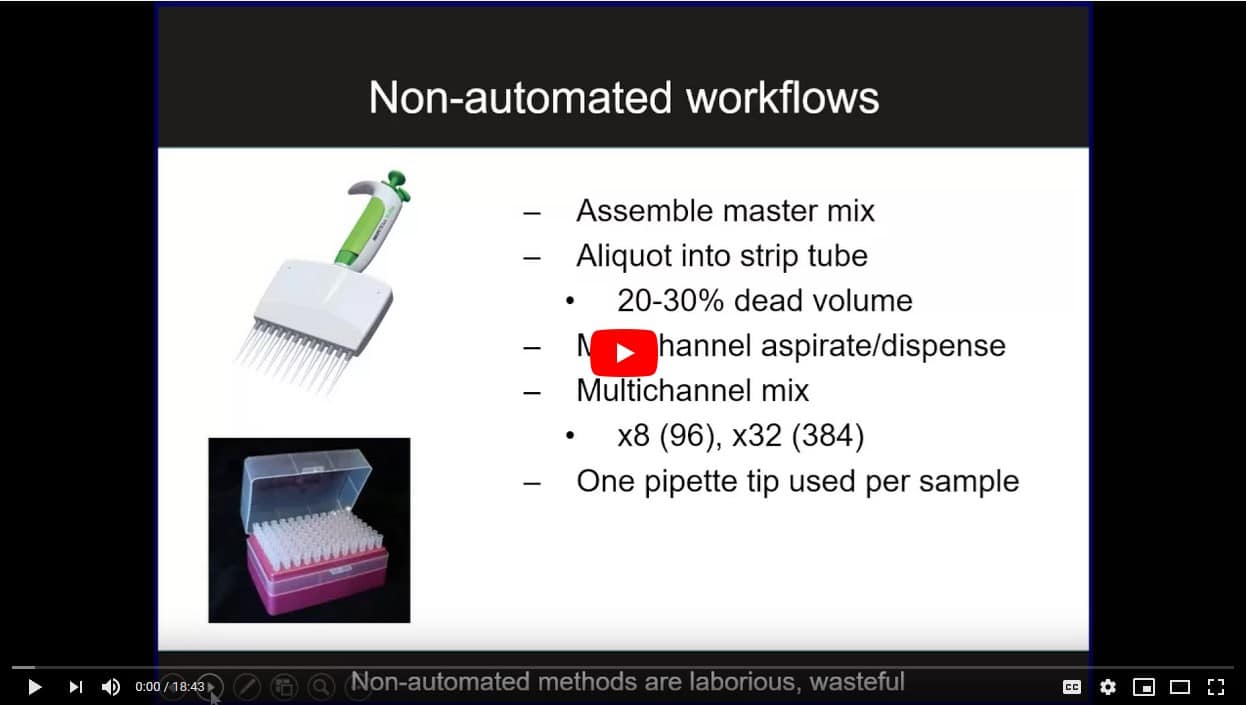MANTIS® 液体处理器
MANTIS®液体处理器
小体积,多功能,高精度
它不仅是一台试剂分液仪
传统的手持式移液器或体积更大的自动液体处理器在处理小于2微升的体积时的准确度和精确度会大大降低,而MANTIS® 自动液体处理器在效率、可重现性和多功能性方面更优秀。
测定开发和实验设计(DoE)
下一代测序(NGS)-文库制备
聚合酶链反应(PCR)工作流程 - 实时化和数字化
酶联免疫吸附测定(ELISA)
细胞培养测定和基于磁珠的测定
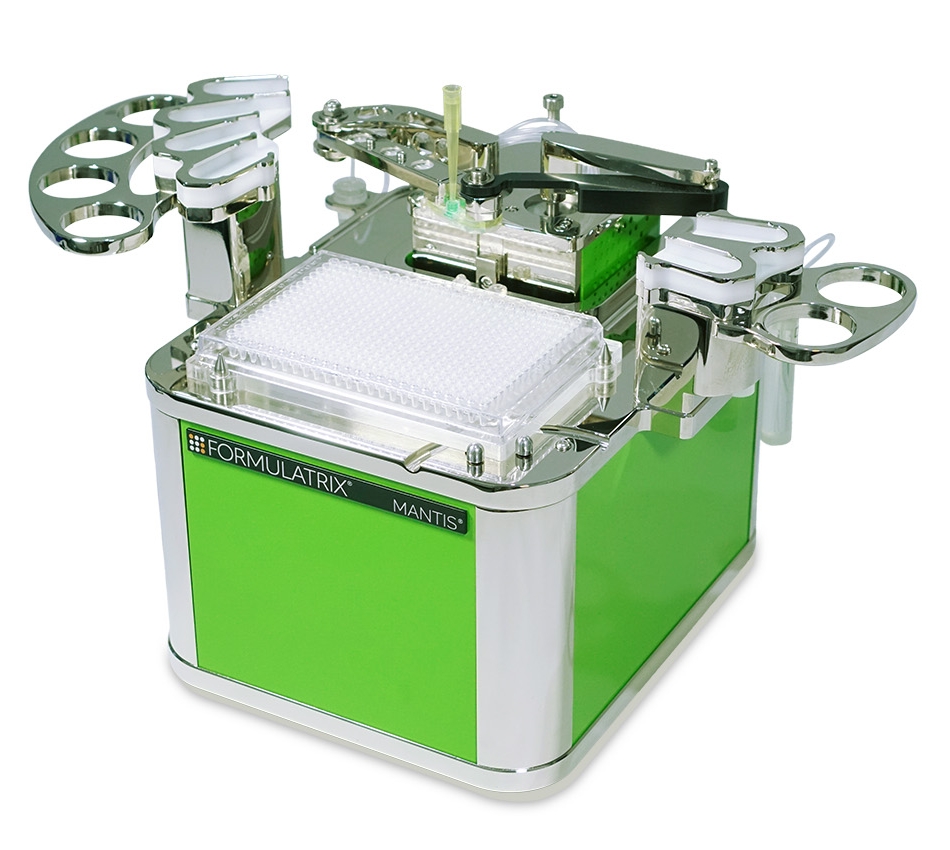
优势:
- 高效:反应小型化,提高通量,节省试剂并降低移液管吸头成本。
- 可重现:分液体积低至100nL且CV<3%
- 多功能:轻松分配和标准化试剂以及细胞培养测定
MANTIS®的概述
MANTIS自动化液体处理系统是一个简单而又经济实惠的解决方案,它可以快速提高用户研究的可重现性和质量,以及用户实验室的实验通量和效率。基于隔膜的芯片设计与液体类兼容,可以轻松分配水溶液和有机溶液。此外,MANTIS 可以在6至1536孔板的任何 SBS 模板中进行分液,并且可以根据需要轻松编程,按照定制设计进行分液。
| 主要特点 | |
|---|---|
|
|
| 主要特点 | |
|---|---|
|
|
提高实验室效率
高效的研究意味着试剂死体积、吸头消耗和反应体积最小化。
MANTIS 液体处理器可分配 100 nL 至 100 mL 的体积,使研究人员一般能够在基因组学和筛选工作流程中运行 2-5 µL 的反应体积。
为了最大限度地减少死体积,我们将试剂直接插入微流控芯片。 通过将移液器吸头用作试剂储液器,死体积进一步减少,仅为 6 μL,因而 MANTIS 成为分液最珍贵试剂的理想选择。
“MANTIS满足小型化分析开发的需求,尤其是在试剂价格昂贵且数量少的情况下。它的用户界面相对操作简单,可以用来编程各种方法。就数据结果的重现性而言,MANTIS是可靠的。”
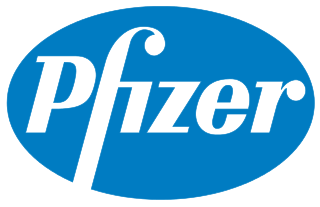
Dave Solis
Pfizer
快速简单地标准化用户的测定板
- 软件计算出标准化值。
- 连续流量(CF)芯片以超过每秒600µL的速度批量分液,因此,能够快速标准化每个样品管、孔和微孔板。
“...我最近使用 MANTIS在干细胞衍生的视网膜细胞中进行了基于高通量 qPCR 的药物筛选,并获得了精度高和有着更快分液速度的可靠同类数据。该仪器操作简单,帮我们在实验室中节省了很多与昂贵的试剂和吸头消耗相关的费用,因此我们很快收回了这台仪器的成本。对于任何希望进行最有效和可重现的基因分析的实验室来说,MANTIS是必不可少的工具。”

Srinivas R. Sripathi
Wilmer Eye Institute at the Johns Hopkins School of Medicine
轻松分配磁珠和细胞
磁珠是提取和纯化核酸的有效手段。传统的移液可能会导致磁珠分配不均匀,从而造成移液无法保证重现性。 MANTIS 精确分配高粘度液体的能力使得磁珠得到均匀分配,从而降低运营成本和塑料浪费。
细胞可能会非常敏感,在处理过程中需要格外小心,这使得试验的可扩展性非常具有挑战性。 MANTIS 的分液动作非常温和,甚至可以对最脆弱的细胞进行分配,例如原代神经元,同时保持细胞活性。
MANTIS中的微流控技术
我们液体处理技术的核心是获得专利的微流体阀组,它可以使用正排量计量和分配离散体积的液体。该阀组可以以每秒 10 次的速度快速填液和分液(具体速度取决于具体产品)。 这项技术精度高且无关样本粘度,已获用户肯定。
高度可重现数据
由于液体处理不精确会影响实验的可重现性,研究人员在考虑将他们的研究自动化时会将 CVs 视为一个重要因素。
MANTIS 微流体分液芯片的核心是一个阀组,用于测量和分配离散体积的液体。该阀组有两个微型隔膜(可以选择 100 nL 和 500 nL 或 1 µL 和 5 µL),可以以最快每秒 10 次的速度进行填液和分液。
| 低通量芯片 | CV* |
|---|---|
| 0.1 μL | 1.4% |
| 0.5 μL | 0.5% |
| 1 μL | 0.4% |
| 高通量芯片 | CV* |
|---|---|
| 1 μL | 0.8% |
| 5 μL | 1.1% |
| 10 μL | 0.5% |
| 25 μL | 0.4% |
| 连续流量芯片 | CV* |
|---|---|
| 25 μL | 0.3% |
| 50 μL | 0.4% |
| 100 μL | 0.3% |
| 200 μL | 0.2% |
* = 变异系数 (CV) 是三个独立微流控芯片读数的平均值。
“....[Mantis 液体处理器] 帮助我们最大限度地减少样品制备的变化。如果我们要将亚微升体积可靠地分配到我们的每个微孔板孔中,并帮助最大限度地减少体积,MANTIS对于我们而言是最经济实惠的方法。”

Ed Emmott
Northeastern University
适用于所有实验室的多功能性
无论体积、粘度、温度、浓度和研究经验如何,MANTIS 都能高效且可重现地分配任何试剂。难怪每年都有越来越多的研究人员了解到并购买了MANTIS,用于分配试剂,作为他们多样化科学工作流程的一部分。
计算 MANTIS® 的投资回报率
用户可以确定使用 MANTIS 系统与使用一次性吸头移液的投资回报率对比。每个实验室都是独一无二的,因此,投资回报率的计算结果仅与输入的信息有关。
用户账户管理系统
MANTIS 软件能在监管环境中无缝运行,包括控制用户访问和跟踪用户历史记录。我们的用户管理系统将通过控制用户权限和存储官方审计跟踪记录来帮助用户在 GLP、21 CFR Part 11 或其他监管环境中运行 MANTIS 分液器。
以下是 MANTIS 21 CFR Part 11“兼容”软件的一些主要优势:
用户账户管理
- 通过本地定义的权限级别限制用户访问和仪器控制
- 登录尝试失败后锁定用户
- 设置和管理密码要求
- 对老用户进行存档,保留所有用户记录
安全审计跟踪记录
- 带有日期和时间戳记的用户操作和仪器操作记录
- 完整的仪器和用户操作电子记录存储在安全数据库中
- 将日志文件导出为受密码保护的 PDF
- 有选择地管理审计跟踪中包含的日志元素
- 在仪器的整个生命周期内保留审计跟踪
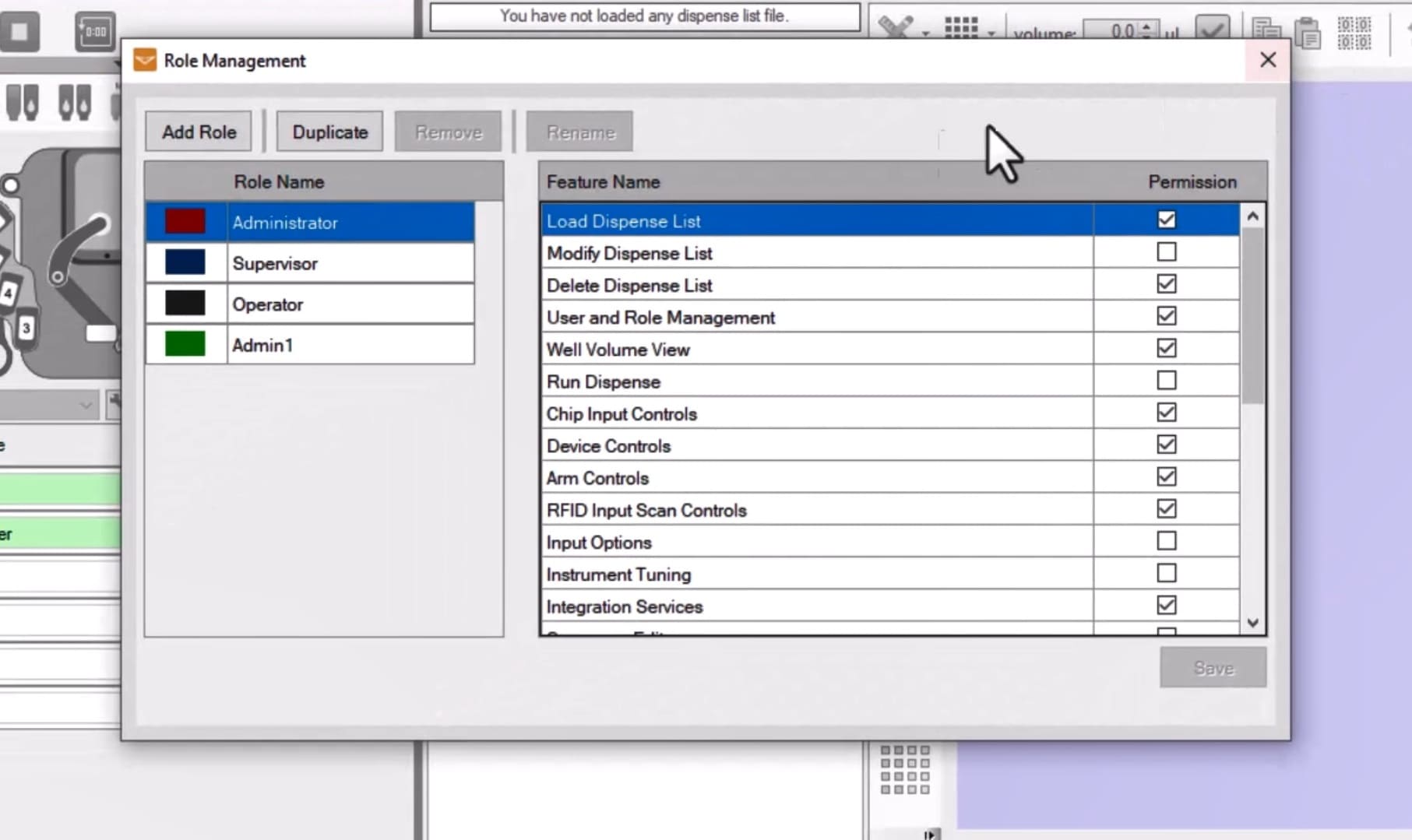
资源
Using the MANTIS® Liquid Handler to Generate Joint Whole-Genome and mRNA Libraries in Single Cells With DNTR-seq
Direct Nuclear Tagmentation and RNA sequencing (DNTR-seq) is a method to jointly sequence genomic DNA and mRNA from the same single cell to determine the direct effect of genotype on phenotype. This application note illustrates how the MANTIS® liquid handler enables multiplex analysis and of both DNA and RNA libraries for 1500 cells in a day.
Tackling the Challenge of Limited Resources During a Pandemic
As laboratories around the world tackle the challenges of screening large numbers of samples for SARS-CoV-2, the managers of these labs have turned to the use of automation to address some key concerns. In this article read the stories from three laboratories who have utilized low-volume, non-contact dispensing technology to ensure continuity of their research and testing work, despite the scarcity of resources such as pipette tips and reagents.
Accurate dispensing of spike-in control RNA in a modular, high-throughput, and flexible diagnostic SARS-CoV-2 RT-qPCR workflow
Biogazelle is a contract research organization based in Belgium they specialize in high-value applications to support pharmaceutical research, clinical trials and diagnostic test development. Learn how the team at Biogazelle incorporated the MANTIS® liquid handler into a COVID-19 testing workflow.
Pushing the limits of single-cell RNA-seq with SMART-Seq® Single Cell technology
The use of single-cell RNA sequencing has enabled the study of the transcription profiles of individual cells. This provides deeper insights into the conditions of health and disease. Due to the limited source material, it is necessary to use a preparation method with high sensitivity and reproducibility. This application note looks at the integration of the MANTIS® liquid handler from FORMULATRIX® into the SMART-Seq® Single Cell Kit from Takara Bio, enabling miniaturization to one-quarter of the original volume without loss of sensitivity.
The MANTIS enables highly reproducible results for high-throughput single-cell proteomic SCoPE2 analysis
High-throughput methods for studying heterogeneity in single-cells have focused on sequencing-based methods because of their accessibility and ease of multiplexing. Methods for single-cell proteomics were limited to the study of small numbers of proteins. Emerging methods for single-cell proteomics seek to permit the study of a large fraction of the proteome across hundreds to thousands of single-cells. The SCoPE2 (Single-Cell ProtEomics 2)1 method seeks to enable high-throughput single cell proteomics using accessible reagents and technology. This advance over SCoPE-MS2 allows SCoPE2 to decrease lysis volumes 10-fold, from 10 μL to 1 μL, to reduce the cost of consumables and equipment over 100-fold, and to increase throughput of sample preparation over 100-fold by parallel processing.
Using Contact Free Liquid Dispensing for High Throughput Covid-19 RT-qPCR Assays
Laboratories around the world are scaling up their Covid-19 diagnostics capabilities as the scientific community endeavors to test more and more individuals to help stem the spread of this pandemic. RT-qPCR is one of the methodologies chosen by laboratories due to its simplicity, sensitivity, and reliability. However, the increase in demand for testing has led to increased pressure on the supply chain of consumables such as pipette tips and PCR reagents, with many shortages reported. The researchers at the MRC Weatherall Institute of Molecular Medicine at Oxford University have demonstrated how the MANTIS(R) liquid handler can replace the reagent addition steps in this workflow. Drastically reducing their pipette tip usage and enabling precise low-volume dispensing for effective assay miniaturization.
Also view the recorded webinar here.
Planning and Executing Massively Combinatorial Phenotypic Assays
Combinatorial screening is an efficient approach to identify optimized protocol conditions. Used to investigate multiple factors in parallel, it encompasses relatively simple experiments designed to assess how a handful of parameters impact a quantifiable metric such as bacterial growth, through to incredibly complex studies such as leave-one-out (L1O) and leave-two-out (L2O) media optimizations. Inevitably, as the number of factors being evaluated increases, planning and executing combinatorial screens becomes more challenging. It is here that advanced software systems and liquid handlers are essential to streamline combinatorial screening workflows and minimize the risk of error.
A Generalizable, Automated Process for Multifactorial Media Optimization
FORMULATRIX® and Synthace partner for A Generalisable, Automated Process For Multifactorial Media Optimisation, or Optimizing Design of Experiments (DoE). The work covers how the MANTIS® liquid handler creases workflows by improving speed and through-put, to produce accurate liquid dispensing capabilities. Additionally, the MANTIS was combined with Synthace's software platform Antha, to powerfully and rapidly perform 4 DoE iterations to optimise media conditions. This optimisation resulted in an 88% time saving compared to manual performance of the same experiment, as well as an overwhelming reduction in consumable usage.
Also view the recorded webinar here.
A cost benefit analysis of implementing low volume liquid handling automation in the development of new HTRF assays.
Developing an immunoassay is challenging. Obtaining a specific signal requires the right combination of sample and detection substrate.
Over the years Cisbio has developed hundreds of assays. In this application note we will show how the MANTIS® liquid handler, with its Large Capacity Chip Changer (LC3) accessory, helped us to improve our process on all of the following key points: reproducibility, time, cost, and reduction of musculoskeletal disorders.
Using the MANTIS® Liquid Handler to generate high quality single-cell RNA-seq data with Smart-seq3
In this application note, we will demonstrate the key steps where the MANTIS can be implemented in the library preparation workflow.
Utilising the MANTIS® dispenser from FORMULATRIX® for automated, reproducible HLA antibody screening in organ transplantation
The Human Leukocyte Antigen (HLA) system is a gene complex in humans that encodes for histocompatibility proteins and are part of the adaptive immune system. Important in disease defence they also play a large role in organ transplants, a donor organ with HLA markers which more closely match those of the recipient will have a lower chance of being rejected than an organ with fewer matching alleles.
At the Laboratory of Medical Immunology (LMI) in Radboud University Medical Centre based in the city of Nijmegen in the Netherlands, sera from potential organ recipients must be screened for HLA specific antibodies at regular time intervals. Detection of antibodies directed against HLA is necessary to avoid hyperacute rejection of a donor organ.
In this investigation the MANTIS® Dispenser from FORMULATRIX® was used to complete a critical step in the HLA workflow; the addition of lymphocytes into prepared Terasaki trays.
Also view the virtual demo on the MANTIS, Why is the MANTIS is a good choice of instrument for labs performing Human Leukocyte Antigen (HLA) work
Miniaturization of Nextera XT Library Preparation for RNA-sequencing of Murine Neuronal Cell cDNA Samples using the MANTIS® Liquid Handler
This application note highlights a workflow for generating high-quality NGS libraries, even from low cellular input, through precise positive displacement microfluidic reagent dispensing.
Scaling up Organoid Cultures using MANTIS® Liquid Handler: A Case Study with MIT
Organoids allow researchers to study tissue biology with remarkable fidelity.
Development of An HTRF® Assay For The Detection of Hepatitis B Antigen
This presentation describes the development of an HTRF® assay for the detection of Hepatitis B “e” antigen (HBeAg) recombinant protein in partnership [between cisbio and] FORMULATRIX® using the MANTIS® Liquid Handler.
An Assessment of the Volumetric Performance of the MANTIS® Liquid Handler Using the Artel MVS® Multichannel Verification System
FORMULATRIX® and Artel present this application note in order to showcase the precision of the MANTIS® Liquid Handler, a novel solution designed to supplement traditional liquid handling platforms. By implementing the MANTIS, researchers can increase experimental reproducibility in genomics workflows that involve dispensing small volumes of valuable reagents with a high degree of precision.
Rapid, Accurate and Flexible DNA Quantitation Using the QuantiFluor® dsDNA System on the MANTIS® Liquid Handler
Fluorescent dye-based quantitation systems are recommended for advanced downstream applications because of their sensitivity, target selectivity, cost, and ease of use. The QuantiFluor® dsDNA System can be used for quantitating dsDNA in single tubes as well as 96- and 384-well plates. Accuracy during repetitive pipetting of small volumes can be difficult and labor intensive with many opportunities for error and costly re-work. The MANTIS® Liquid Handler is a novel bench-top liquid handler that can meet many requirements for high-throughput reagent dispensing at a fraction of the cost of larger systems. For nucleic acid quantitation, the MANTIS accurately dispenses small volumes of the QuantiFluor® Dye working solution for reproducible quantitation results. In this application note, we demonstrate the compatibility of the MANTIS to quickly and accurately automate reagent handling of the QuantiFluor® dsDNA System for both 96- and 384-well plate formats.
Cell dispensing in a high-content, primary neuron based, screening platform using the Mantis Liquid Handler
The Scripps Research Institute uses the Mantis as a precise, reliable, and robust solution for dispensing even the most sensitive primary neuronal cells in the generation of a high content screening platform.
Automated Processing of the GlobalFiler® Express PCR Amplification Kit With the Formulatrix Mantis
This application note describes the use of the Mantis to dispense the Global Filer® Express Kit master mix to the amplification plate with treated buccal punches present.
Implementing the Mantis microfluidic liquid handler as a tool for optimizing droplet digital PCR and other core lab functions.
The FORMULATRIX® MANTIS® microfluidic liquid handler was used at the core facility at Oregon State University to improve our workflows and facilitate research projects for others. The MANTIS dispensing system can be employed to set up complex dilution patterns which can be advantageous to development projects. The MANTIS has been utilized in a proof of concept project with our Bio-Rad Droplet Digital^TM PCR (ddPCR^TM) to determine its effectiveness in optimizing reaction primer and template concentrations in addition to employing adequate cleaning protocols for chip reuse.
Generalisable, automated Design of Experiments execution for multifactorial media optimisation
A generalisable DoE process combining the execution planning and data management capabilities of the Antha software (Synthace Ltd) with the high-speed, automated MANTIS® liquid dispenser (FORMULATRIX®). Specifically, the work demonstrates a 12-factor DoE to optimise growth media for the production of eGFP. The process demonstrated achieves better statistical significance in the respective experiments, fewer errors, more streamlined data processing, less hands-on time and greater speed to scientific insight.
Automation and Miniaturization of Low-Input RNA-SeqSample Prep Using Desktop Microfluidics
Miniaturization and scale-down of reagent and reaction volumes for low-inputRNA-Seq work flows enables researchers to work with low sample input and increased number sof samples. As the reaction volumes are reduced, accurate delivery of reagent volumes emerges as a critical step to maintain data quality and technical reproducibility.
We present results from miniaturization of the ClontechSMART-Seq® v4 Ultra® Low Input RNA Kit for Sequencing and Illumina Nextera® XT workflows for generation of high-qualityRNA-Seq samples using a compact desktop microfluidic dispensing technology.
High Throughput Large Scale Genotyping in Soybean Utilizing Novel Microfluidic Reagent Dispensing Technology
Recent advances in DNA marker/QTL (gene) discovery and marker detection technology have great impacts on crop improvement through marker-assisted selection. To discover and deploy the DNA markers in plant breeding programs, establishing low cost, high throughput, large scale and reliable and flexible marker genotyping platform is one of key factors. Implementing high-throughput workflows for SNP genotyping platforms such as TaqMan and KASP assays requires accurate dispensing of assay master mixes and reagents. Speed and accuracy are critical factors to achieve the desired assay performance while utilizing a workflow that minimizes reagent utilization to allow for large-scale studies.
Assuring Optimal Promega Assays Development by Design of Experiment Workflow and Mantis Dispenser
To facilitate assay development we employ a Design of Experiment approach during assay development. Design of Experiments (DoE) offers a systematic way of simultaneously evaluating multiple assay parameters and analyzing the resulting process outputs to optimize assay conditions with a minimum number of experiments
Working With Difficult Reagents
In this online workshop, we will share examples of studies carried out by our end users that have been used to automate tasks that involve reagents and liquids that have traditionally been difficult to move satisfactorily from manual pipetting to automated liquid handlers. This includes extracellular matrices, solvents, beads, cells, and viscous liquids.
Using contact-free liquid dispensing for high throughput COVID QPCR assays
The global Covid 19 pandemic has led to unprecedented demand for scalable diagnostic tests, which in turn has led to supply shortages for reagents and consumables. QPCR is currently the method of choice for Covid diagnostics due to simplicity, reliability and versatility. However setting up many parallel QPCR assays, for example 384 PCR plates, requires automated liquid handlers to be able to reliably scale. Although conventional liquid handlers can perform this task they have a high consumable requirement in the form of disposable tips and under pandemic conditions supply chains are often unable to meet demand. Here we describe the use of the MANTIS liquid dispenser for contactless dispensing can greatly reducing consumable tip usage for Covid diagnostics, as well as being able to reliably miniaturise QPCR assays to reduce reagents consumption
Planning massively combinatorial phenotypic assays.
The complexity of combinatorial screens explodes as the number of reagents increases. This talk addresses the challenges of planning experiments with up to 50 individually dispensed ingredients per well. The heart of our system is a new software package that automates the planning of complex liquid handling operations. We demonstrate combinatorial assays on the MANTIS can detect metabolic interactions in bacteria with complex growth requirements.
MANTIS Demonstration - Utilising the MANTIS in the newly published SmartSeqv3 protocol for improved single-cell RNA Sequencing.
Michael Hagemann-Jensen from the Department of Cell and Molecular Biology at the Karolinska Institute in Stockholm, Sweden, will present insights into the newly published Smart-seq3 for single cell RNA analysis. We will demonstrate how the Mantis from Formulatrix can be used to automate steps in the protocol to reduce working volumes and lower costs.
A Generalisable, Automated Process For Multifactorial Media Optimisation
FORMULATRIX® and Synthace partner to host a webinar to describe and explain the findings of their recent work. Our two key speakers were Dan Lord and Markus Gershater. Dan Lord, applications manager with FORMULATRIX, explained how the MANTIS® can increase your workflow by improving your speed and through-put to produce accurate liquid dispensing capabilities. Also, Markus Gershater, CSO of Synthace, explained how Synthace's lab team had combined the MANTIS with Synthace's software platform Antha, to powerfully and rapidly perform 4 DoE iterations to optimise media. Achieving an 88% time saving compared to manual performance of the same experiment.
A Technique for Scalable Organoid Culture
Organoid models are promising tools for the study of disease and development of new therapeutics. However, conventional organoid plating is labor and reagent intensive. We will present on how we have applied the low-input MANTIS® to automate the plating of organoids, reducing requirements for expensive reagents, making organoid culture amenable to high-throughput applications.
Webinar recorded July 10, 2019. "A Technique for Scalable Organoid Culture" Ben Mead.
Optimizing Single-cell RNA-Sequencing Workflows
Using the MANTIS® Liquid Handler from FORMULATRIX, Nathan has been able to analyze enough single-cells to develop a methodology for characterizing 3' bias in RNA-seq libraries. In this webinar clip, Nathan explains that enzyme processivity impacts bias in characteristic and correctable ways. Further, Nathan considers automation, and provides overarching recommendations for Single-Cell RNA-sequencing experimental design.
Webinar recorded April 13, 2017. "Optimizing Single-Cell RNA-Sequencing Workflows"" Part 3: Nathan Archer. PhD.
Monitoring CRISPR Gene Editing with RNA-Seq
Using the MANTIS® Liquid Handler from FORMULATRIX, Dario has been able to develop an efficient and reproducible method for miniaturized cDNA synthesis reactions using the Takara Bio SMART-Seq V4 Ultra Low Input RNA Kit. In this webinar clip, Dario explains how quarter volume cDNA synthesis reactions enable the use of RNA-seq as a general screening tool to monitor genome editing projects.
Webinar recorded April 13, 2017. "Optimizing Single-Cell RNA-Sequencing Workflows" Part 4: Dario Boffelli.
High-throughput Automation of Single-cell Library Prep
The New York Genome Center has implemented quality control approaches that include selective library preparation to enhance the efficiency of their miniaturized single-cell sequencing.
Webinar recorded May 18, 2016. "Single-Cell RNA-Seq Optimization: Working Smarter with the Mantis." Part 3: Rahul Satija.
Miniaturization of AlphaLISA® Immunoassays for HTS
Using the MANTIS® Liquid Handler from FORMULATRIX and the Echo® from Labcyte, Gene has developed an efficient approach to immunoassays that conserves both consumable tip and reagent consumption making high-throughput screening cost-effective, and therefore viable, in an academic setting. In this webinar clip, Gene explains how the Echo and MANTIS Liquid Handlers complement each other for sample and reagent transfers in the context of high-throughput screening.
Webinar recorded October 3, 2017. "Miniaturization of High-throughput Screens for Protein-protein Interactions" Part 3: Gene Ananiev.
Optimizing High-Throughput qPCR Workflows
Using the MANTIS® Liquid Handler from FORMULATRIX® and the Echo® from Labcyte, Sri has increased his lab's throughput to a level sufficient for high content screening of drug candidates. In this webinar clip, Sri explains how the Echo and MANTIS Liquid Handlers complement each other for sample and reagent transfers in the context of high-throughput qPCR. Further, Sri considers the benefits of automation and provides overarching recommendations for qPCR experimental design.
Webinar recorded June 27, 2017. "Optimizing High-Throughput qPCR Workflows." Part 3: Sri Sripathi.
Computer Specifications
- Windows Vista 32-bit, Windows 7/8/10 32-bit or 64-bit, or Windows 11
- Dual Core x86 or x64 1.5 GHz processor
- 1 built-in USB port (USB 2.0 recommended, USB 3.0 supported)
- 4 GB RAM
- 1 GB Hard Drive space
- 768 pixels vertical minimum screen resolution (900+ pixels recommended)
Electrical Specifications
- 110 V - 240 V, 50 Hz - 60 Hz, 50 W typical, 150 W max. Standard or European outlet
Environmental Requirements
- 4-40 °C ambient temperature
- 85% or less relative humidity
- 4,000 m maximum altitude
Mantis Physical Dimensions
- Height: 230 mm (9”) (Full Extension, not including pipette tip input)
- Height: 188 mm (7.4”) (No Extension, not including pipette tip input)
- Width: 335 mm (13.1”) (smaller without ACC or reagent holders)
- Depth: 215 mm (8.4”)
- Weight: 5.2 kg (11.5 lbs)
Mantis with LC3 Dimensions
- Width: 502 mm or 19.76” (Mantis with LC3)
- Height: Full Extension: 286 mm or 11.26”
- Depth: 240 mm or 9.45”

Christopher Hubbs
Scripps Research Institute

“The Mantis reduces variability allowing for more efficient screen development”
Ed Emmott
Northeastern University

"...[The Mantis liquid handler] helps us minimizes variation in sample prep. It is the most economical way to for us to reliably dispense sub-microliter volumes to each of our wells and help minimize our volumes..."
Anonymous Review
Clinical-Stage Gene Therapy Company

Before I got this machine, I spent, average 2-3 hours every day, normalizing my samples and mixing the PCR rxns. I can say anyone will agree that it is a very tedious and boring work. Then I happened to find Mantis ad in a corner of the webpage I was searching. I proposed to buy one since things could not be more miserable.
So they came for the demo. I was at first very suspicious for it. Worked in a chemistry lab for several years, I have deal with so many kinds of the pumps and I know how hard it is to keep it both move fast and accurate. Surprisingly, Mantis did very repeatable and fast operations.
So we bought it and now almost six month past. I have made about 700 96 plates using this machine. I kept taking aliquots out for checking the accuracy and I would say so far, it is as good as the first day it came.
I would highly recommend it for you if you need to normalize sample plates a lot. This one works as good as, if not better, than some huge liquid handling system that is hundreds time more expensive.
At least, give it a try.
Srinivas R. Sripathi
Wilmer Eye Institute at the Johns Hopkins School of Medicine

When it comes to dispensing quantitative real-time PCR master mix, the MANTIS meets and exceeds every requirement. We have developed protocols for 2 µL qPCR reactions that would just not be feasible without the precise and reliable dispensing of the MANTIS at 1 µL. Using MANTIS, I recently performed a high-throughput qPCR-based drug screen in stem cell derived retinal cells and acquired reliable data with homogeneity, precision, and faster dispensing. The instrument is user-friendly and has easily paid for itself in the savings associated with both expensive reagents and tip consumption in our lab. The MANTIS is an essential tool for any lab that wishes to perform the most efficient and reproducible genetic analysis
Paul Smith
MRC Technology

Invaluable device for setting up complex experiments comprising of several different reagents and assays at the same time. Exceptionally powerful for early assay development.
Wolfgang Breitwieser
Cancer Research UK

Automated liquid dispensing is normally associated with big expensive equipment. Not so the Mantis. It combines speed and accuracy with an extremely small footprint and a relatively decent price tag. For us it has become an integral part of single cell processing and NGS applications. Handling is straight forward and intuitive and even my automation averse lab colleagues love to use it.
Omid Faridani
Garvan Institute of Medical Sciences
University of New South Wales

MANTIS liquid handler enabled us to prepare countless plates of single cells for RNA sequencing quickly and efficiently. Also, the miniaturization of reactions by MANTIS made our recently developed Smart-seq3 technology very inexpensive, saving us the reagent budget.
Cheng Long Chu
SYNLAB Belgium

The Mantis Liquid Handler helps us to dispense in small wells, especially when the reagents are expensive. The UI is easy to set up and use.
Anonymous Review
Major Pharmaceutical Company

The Mantis is a compact, versatile, and convenient liquid handler that allows for the accurate dispense of reagent without the extensive liquid class development and testing needed for most other platforms in the market. The software can be used to very quickly deliver reagents to complicated multi-well plate set-ups, which helps reduce pipetting errors and eliminate ergonomic stress. It is a great option for an assay development lab like ours that is not high throughput and is interested in robotics.
Daniel Tran
Genentech

1. The dispense list can be easily created using excel or text files to define the volume needed in each well.
2. Saves a lot of reagent because it requires very little prime volume
Alex Stowell
CRUK Manchester Institute

The Mantis is like no other liquid handler I’ve ever used. For low throughput, highly complex assays where having very low dead volumes is an absolute must, this machine ticks all those boxes. We have found it very useful for assay development and mechanism of inhibition studies. We also purchased the LC3 (large capacity chip changer) alongside the Mantis to ensure that we would not be restricted by the number of different reagents we could use at any one time. We routinely perform experiments requiring upwards of 10 different reagents so this has been an invaluable addition. The software is incredibly easy to negotiate, is very intuitive and allows you to set up very complicated experiments very easily and quickly. We’re very impressed with this machine.
Sara Dunne
Northwestern University

The Mantis is a small liquid dispenser for 96 or 384 well plates using their patented microfluidic dispensing chips. We use it to set up assays when preparing small numbers of plates, or anytime we are using highly precious reagents that we don't want to waste. With a little care we can get the dead volume down to 10uL. Although it dispenses one well at a time we find that it's speed is sufficient for most assays. And the software is very intuitive and easy to use. We've had it for six months and it has quickly become one of our most popular liquid handlers.
Jennifer McKelvie
UK Cancer Research Technology

The Mantis is an extremely versatile piece of kit which allows you to set up complex assays with minimal hands on time. We are currently using it to set up assay development experiments such as buffer optimisation as well as mode of action studies. We have found that the Mantis dramatically reduces hands on time in the lab, especially when running stopped assays as these can be programmed in and left to run.
Shouquan Deng
GE Analytical Instruments

this product is very compact and smart. What’s more it can dispense very tiny volume of solution, such as 5µL, into a small channel. All these are very suitable to our products development.
Anonymous Review
Leading Academic Lab

We got a Mantis to dispense cells and reagents in 384-well format. It's been great. We do better experiments now since it is easy to use the Mantis to set up tests of a lot of concentrations. It's been reliable and used regularly for more than two years now. Very glad we have the Mantis.
Anonymous Review
Leading Academic Lab

The Mantis is an ideal instrument for applications that require high precision and accuracy. In my lab, we use the Mantis primarily to add cells and drug treatments to 384-well plates. I find the Mantis to be more accurate when adding cells to 384-well plates than other reagent dispensers. The instrument allows me to easily test different drug concentrations and combinations. Overall, the Mantis has proven to me that it can reduce the background noise of data, and improve the accuracy of my experiments
Anonymous Review
Major Pharmaceutical Company

The Mantis made an immediate impact in our lab. We support Large Molecule Discovery Research and this device allows us to minituraize assays and speed development. Our favorite features are the disposable chip format which eliminates cross contamination entirely. I strongly reccomend this product based on the value it has provided to our lab.

